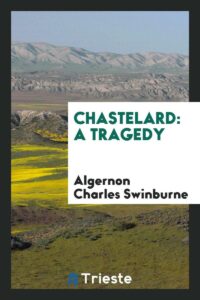SCENE I — Before Holyrood.
byScene I opens outside Holyrood, where a restless crowd gathers, murmuring with anticipation and judgment. The name on everyone’s lips is Chastelard—a poet, a lover, and now, a man bound for execution. The people, dressed in everyday wear, bring with them opinions sharpened by gossip and colored by class divides. Soldiers stand alongside commoners, their expressions a mix of curiosity and disdain. Whispers spread like fire, suggesting that the Queen herself may have shared more than courtly affection with the condemned. One man recalls another hanging not long ago and wonders aloud if Chastelard will weep or face death with dignity. To them, he is not just a man but a symbol—of dangerous indulgence, unbridled passion, and what happens when poetry strays too close to power.
There is bitterness in their tone when they speak of art and nobility, viewing both with suspicion. One citizen remarks with contempt that songs praising love have no place in a kingdom governed by law and virtue. Another scoffs at the Queen’s rumored indulgence in verse and romance, claiming her actions mock the throne. Their disdain for Chastelard isn’t only about his scandal but about what he represents: a man from France who dared to touch the sacred. Religion is not spared in their debate, as talk of Priest Black’s presence stirs resentment. They accuse the clergy of hypocrisy, suggesting that holiness can be bought or tainted through proximity to disgrace. Voices rise, not in sympathy but in fury, demanding that justice be served with no room for mercy.
Among the noise, a quieter voice emerges—one that asks not for punishment, but for understanding. A woman wonders how a mere poet could ensnare a queen, not with scorn but with genuine curiosity. Her question breaks the rhythm of judgment and introduces an unsettling idea: that love, however scandalous, might hold truth in its defiance. She is met with silence at first, the crowd unsure whether to sneer or agree. That moment reveals cracks in the crowd’s certainty, exposing the vulnerability behind public morality. Could it be that Chastelard’s fault lies not in sin but in daring to love beyond his station? This question lingers, unanswered, yet deeply felt.
The gathering outside Holyrood becomes a mirror reflecting the nation’s unrest. Conversations that began with cruelty now flicker with complexity. While most still cheer for Chastelard’s fall, their voices reveal layers of fear, envy, and fascination. His story has become more than scandal; it is a cautionary tale shaped by the mouths of many, each eager to assign blame or bask in spectacle. The Queen’s silence is also judged—her lack of defense taken as guilt by omission. Yet no one can deny the pull of this drama, unfolding not on a stage but before their very eyes. They’ve come to witness not just justice, but the unraveling of a love that dared to disturb the boundaries of royalty and restraint.
As the hour nears, tension builds like a storm cloud over the palace walls. Guards stand ready, their discipline masking the unease that hangs in the air. Somewhere inside, Chastelard awaits, perhaps unaware of how the world outside debates his legacy. Whether remembered as a criminal or a romantic, his fate is no longer in his hands but in the mouths of those gathered to watch him fall. The crowd does not just witness—they shape history through their words. Their gossip, their opinions, their disdain—all fuse into the memory that will survive long after the scaffold has been removed. Scene I lays the foundation not only for a personal tragedy but for a larger reflection on judgment, power, and the human desire to witness a fall from grace.


